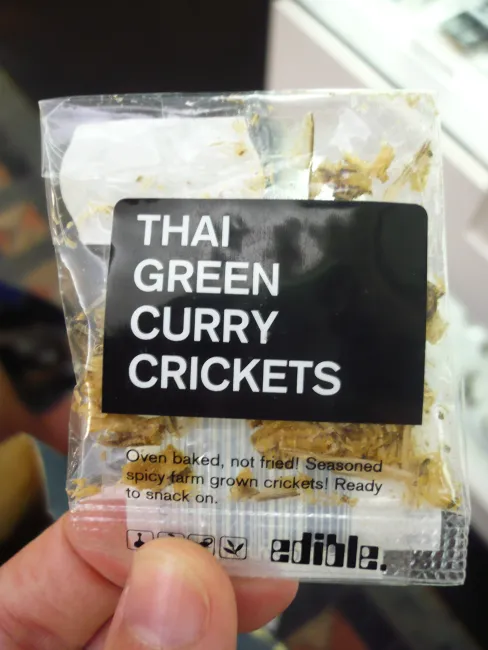This paper compares stylised, hypothetical dietary scenarios to assess the potential for reducing agricultural land requirements. It suggests that a combination of smaller shifts in consumer diet behaviour – such as reducing beef consumption by replacing with chicken, introducing insects into mainstream diets and reducing consumer waste – could reduce agricultural land requirements.

The authors construct a series of stylised scenarios that assume 50% of current animal products are replaced with one of the following alternatives to animal products: insects, cultured meat, imitation meat and aquaculture. The researchers point out that the 50% substitution figure is purely arbitrary and only acts as a reference point for comparing the land use requirements among outcomes. Each of the ‘conventional’ animal products is also modelled as a separate scenario (e.g. poultry meat currently provides 24% of all animal protein, so in the poultry substitution scenario 62% of animal product consumption is from poultry).
For each separate dietary scenario the agricultural land required globally is calculated and expressed using the Human Appropriation of Land for Food (HALF) index (see this paper from the same authors – link is external). The figure below illustrates the total cropland and pasture areas for food production of the separate scenarios constructed.

In addition to the dietary changes modelled, the study compares scenarios of food waste reduction and the global adoption of the average diets consumed in India and the USA. The authors explain that the global diet adoptions are not chosen because these are desirable or probable scenarios, but useful to demonstrate the potential transformative powers of altered consumption patterns.
The results of this paper are not intended to be predictive but instead allow for comparisons in land use requirements among the scenarios. The authors suggest that although reducing meat consumption overall is likely to have the greatest effect on the land use footprint, replacing beef or lamb with any of the alternatives they considered (including chicken and eggs) has the potential to achieve substantial sustainability benefits. They also suggest that greenhouse gas lifecycle assessments of these dietary scenarios, as well as the water requirements and biodiversity considerations, should be also be undertaken (note that something along these lines has already been taken - see here). The paper concludes that it is consumer behaviour that has the most transformative power, so researching how to best influence consumers towards more sustainable diets is required.
Abstract
Animal products, i.e. meat, milk and eggs, provide an important component in global diets, but livestock dominate agricultural land use by area and are a major source of greenhouse gases. Cultural and personal associations with animal product consumption create barriers to moderating consumption, and hence reduced environmental impacts. Here we review alternatives to conventional animal products, including cultured meat, imitation meat and insects (i.e. entomophagy), and explore the potential change in global agricultural land requirements associated with each alternative. Stylised transformative consumption scenarios where half of current conventional animal products are substituted to provide at least equal protein and calories are considered. The analysis also considers and compares the agricultural land area given shifts between conventional animal product consumption. The results suggest that imitation meat and insects have the highest land use efficiency, but the land use requirements are only slightly greater for eggs and poultry meat. The efficiency of insects and their ability to convert agricultural by-products and food waste into food, suggests further research into insect production is warranted. Cultured meat does not appear to offer substantial benefits over poultry meat or eggs, with similar conversion efficiency, but higher direct energy requirements. Comparison with the land use savings from reduced consumer waste, including over-consumption, suggests greater benefits could be achieved from alternative dietary transformations considered. We conclude that although a diet with lower rates of animal product consumption is likely to create the greatest reduction in agricultural land, a mix of smaller changes in consumer behaviour, such as replacing beef with chicken, reducing food waste and potentially introducing insects more commonly into diets, would also achieve land savings and a more sustainable food system.
Reference
Alexander, P., Brown, C., Arneth, A., Dias, C., Finnigan, J., Moran, D. and Rounsevell, M.D., 2017. Could consumption of insects, cultured meat or imitation meat reduce global agricultural land use?. Global Food Security.
You can read the full article here (open access).
You may also be interested in this paper by the same authors looking at how we can achieve greater food and nutrition security more sustainably by reducing waste and also how losses impact overall food system efficiency.
NOTE: the FCRN has written extensively on different approaches to improving livestock sustainability. See in particular Lean, green, mean, obscene…? which looks at how different interpretations of the word ‘efficiency’ influence ideas about what a sustainable livestock system looks like and whether a switch from ruminant to pig and poultry meat really makes sense. The research library also contains various papers which investigate alternative approaches to improving the sustainability of livestock farming, namely by reducing feed-food competition – this would imply a greater role for ruminant than for pig and poultry production: see papers here, here, here, here and here.
You can look through the food type category meat, eggs and alternatives in our research library. A review paper looking at the future of artificial meat is available here, and you can also search for in vitro meat at our website.
For a systematic review looking at consumer perceptions of sustainable protein consumption see this paper.
Finally, you can also read a review about the lifecycle assessment of edible insects for food protein by one of our members here.




Comments (0)